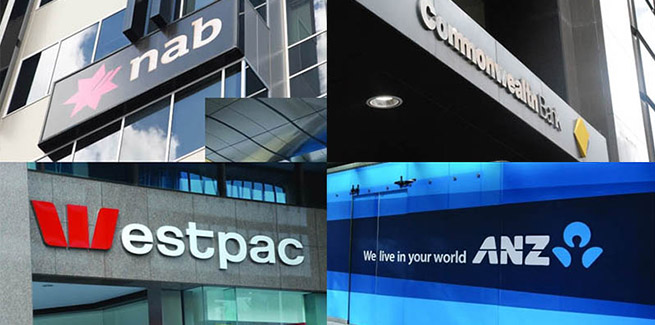The Australian Prudential Regulation Authority (APRA) has released its new Monthly Authorised Deposit Taking Institutions Statistics (MADIS), which is an updated version of its previously labelled Monthly Banking Statistics.
The new data set has been updated as part of APRA’s implementation of the Economic and Financial Statistics (EFS) collection, which is designed to better align with international reporting standards.
APRA’s latest data for month of July has revealed that the Commonwealth Bank of Australia (CBA) was the only big four bank to record growth in its home loan book when compared to June (also updated).
Meanwhile, ANZ, NAB and Westpac each recorded mortgage portfolio contractions totalling $2.7 billion.
ANZ
ANZ’s mortgage portfolio contracted by approximately $2 billion in the month ending 31 July, from approximately $248 billion to $246 billion.
The contraction was mostly driven by a $1.3-billion reduction in its owner-occupied book, when dropped from $159.6 billion to $158.3 billion.
ANZ’s investment portfolio also slipped, contracting by roughly $700 million, from $88.4 billion to $87.7 billion.
Over the past quarter, ANZ’s total mortgage portfolio has slipped $3 billion from $249 billion as at 30 April.
ANZ CEO Shayne Elliott recently attributed the contraction in the bank’s mortgage book to a “conscious” decision to revise its home lending strategy.
Speaking at Aussie Home Loans’ 2019 Imagine conference in Sydney, Mr Elliott lamented the current state of affairs in the home lending space.
Mr Elliott said that scrutiny placed on lenders off the back of the banking royal commission has produced a risk-averse culture that errs on the side of caution, in fear of repercussion for supposed breaches of responsible lending guidance.
The CEO called for greater clarity regarding what he described as “grey” and ambiguous guidance, which calls on credit providers to take reasonable steps to ensure a loan is “not unsuitable”.
Mr Elliott said that until such clarity is provided, the bank would avoid processing complex loan applications, which may put the bank at risk under existing arrangements.
The ANZ CEO has also conceded that the bank’s reaction to increased regulatory scrutiny in the lending environment was “clumsy”, adding that ANZ “overshot” in its policy response.
NAB
APRA’s latest statistics have revealed that NAB’s mortgage portfolio also contracted in July, down approximately $400 million, from $261.9 billion to $261.5 billion.
NAB’s owner-occupied book increased by $400 million in July, up from $146.8 billion as at 30 June to $147.2 billion.
However, the increase in NAB’s owner-occupied book was offset by an $800-million decline in its investment portfolio, which dropped from $115.1 billion to $114.3 billion.
Westpac
Over the month to 31 July, Westpac’s (including its subsidiaries) total mortgage portfolio contracted by approximately $300 million, from $413 billion to $412.7 billion.
Like NAB, Westpac recorded growth in its owner-occupied book, which increased by approximately $400 million, from $226.7 billion to $227.1 billion.
However, a $500-million contraction in Westpac’s investment portfolio offset owner-occupied growth, with its investment portfolio down from approximately $186.3 billion to $185.6 billion.
CBA
The Commonwealth Bank (including its subsidiary Bankwest) was the only big four bank to record growth in its mortgage portfolio in the month to 31 July, with its book rising by $1.3 billion from $434.5 billion to $435.8 billion.
CBA’s portfolio growth came exclusively via an increase in its owner-occupied book, which grew by $1.7 billion, from $278.7 billion to 280.4 billion.
However, as with its big four peers, CBA recorded a contraction in its investment portfolio, which dropped by approximately $400 million from $155.8 billion to $155.4 billion.
Housing credit growth still subdued
The release of APRA’s data coincided with the publication of the Reserve Bank of Australia’s monthly Financial Aggregates data, which has revealed that over the month to 31 July 2019, housing credit grew 0.3 per cent, up from 0.2 per cent growth in the previous month.
However, when comparing the 12 months to 31 July 2019 to the previous corresponding period, housing credit growth was down from 5.5 per cent to 3.3 per cent.
When including personal and business lending, total credit grew 0.2 per cent in the month to 31 July (up from 0.1 per cent in June) and 3.1 per cent in the 12 months to July (down from 4.4 per cent in the previous corresponding period).
[Related: ASIC urged mortgage industry to ‘step up’ game]

